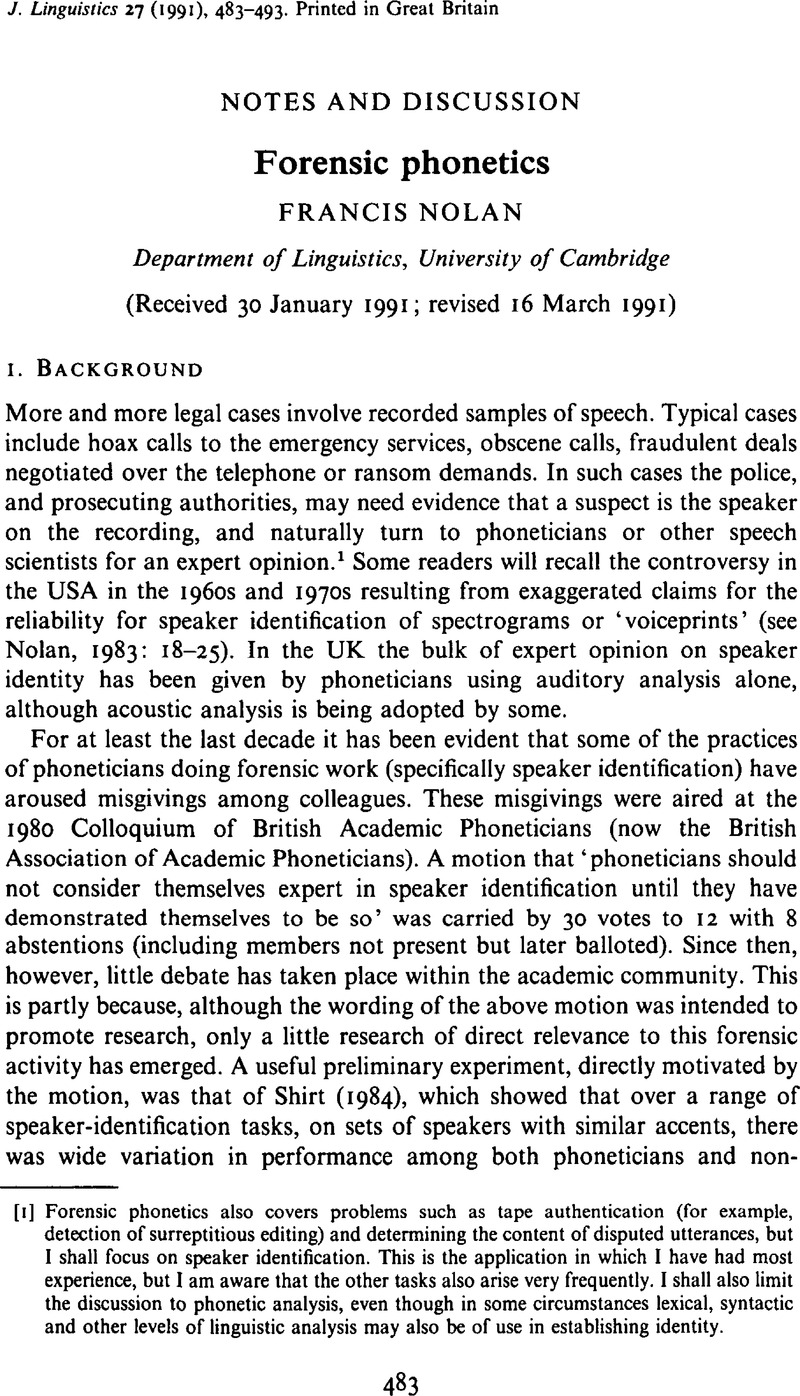Crossref Citations
This article has been cited by the following publications. This list is generated based on data provided by Crossref.
Bradley, David
and
Bauer, Laurie
1992.
Shorter notices.
Australian Journal of Linguistics,
Vol. 12,
Issue. 2,
p.
337.
Mcmenamin, Gerald
2002.
Forensic Linguistics.
Meuwly, D.
2006.
Forensic Individualisation from Biometric Data.
Science & Justice,
Vol. 46,
Issue. 4,
p.
205.
Brunner, Elizabeth Gentry
2009.
The Study of Variation from Two Perspectives.
Language and Linguistics Compass,
Vol. 3,
Issue. 3,
p.
734.
Lowry, Orla
2011.
Belfast Intonation and Speaker Gender.
Journal of English Linguistics,
Vol. 39,
Issue. 3,
p.
209.
Ramírez Salado, Mercedes
2021.
Imprecisiones terminológicas derivadas de la traducción en el ámbito de la lingüística forense.
Revista de Lingüística y Lenguas Aplicadas,
Vol. 16,
Issue. 1,
p.
175.
Ramírez Salado, Mercedes
2021.
Imprecisiones terminológicas derivadas de la traducción en el ámbito de la lingüística forense.
Revista de Lingüística y Lenguas Aplicadas,
Vol. 16,
Issue. ,
p.
175.
Hudson, Toby
McDougall, Kirsty
and
Hughes, Vincent
2021.
The Cambridge Handbook of Phonetics.
p.
631.
de Jong-Lendle, Gea
2022.
Language as Evidence.
p.
257.
Bautista, Pamela
and
Plante-Hébert, Julien
2025.
The other-accent effect on speaker recognition.
Working papers in Applied Linguistics and Linguistics at York,
Vol. 4,
Issue. SI,
p.
13.



